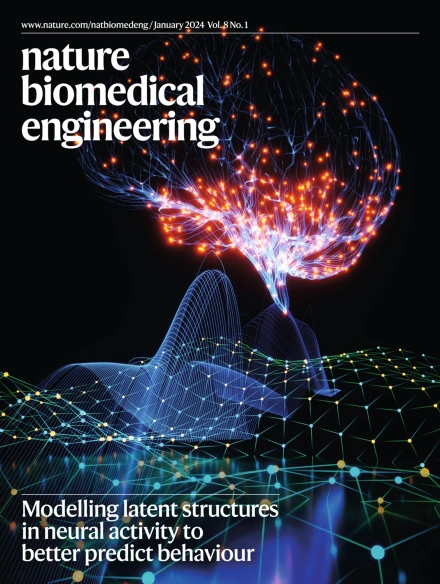机械力通过ROCK信号驱动退行性脊柱疾病
IF 26.8
1区 医学
Q1 ENGINEERING, BIOMEDICAL
引用次数: 0
摘要
脊柱上的重复机械力通过一种未知的分子机制导致脊柱韧带肥大。我们在接受脊柱手术减压的患者获得的韧带中观察到,力驱动的rho相关激酶(ROCK)信号传导导致成纤维细胞的肌成纤维细胞积累,并表明ROCK信号传导抑制剂阻断了这种力依赖的分子机制,导致脊柱韧带纤维化。本文章由计算机程序翻译,如有差异,请以英文原文为准。

Mechanical forces drive degenerative spine disease through ROCK signalling
Repetitive mechanical forces on the spine cause spinal ligament hypertrophy through an unknown molecular mechanism. We observed in ligaments obtained from patients undergoing surgical spine decompression that force-driven Rho-associated kinase (ROCK) signalling causes accumulation of myofibroblasts from fibroblasts and show that ROCK signalling inhibitors block this force-dependent molecular mechanism contributing to spinal ligament fibrosis.
求助全文
通过发布文献求助,成功后即可免费获取论文全文。
去求助
来源期刊

Nature Biomedical Engineering
Medicine-Medicine (miscellaneous)
CiteScore
45.30
自引率
1.10%
发文量
138
期刊介绍:
Nature Biomedical Engineering is an online-only monthly journal that was launched in January 2017. It aims to publish original research, reviews, and commentary focusing on applied biomedicine and health technology. The journal targets a diverse audience, including life scientists who are involved in developing experimental or computational systems and methods to enhance our understanding of human physiology. It also covers biomedical researchers and engineers who are engaged in designing or optimizing therapies, assays, devices, or procedures for diagnosing or treating diseases. Additionally, clinicians, who make use of research outputs to evaluate patient health or administer therapy in various clinical settings and healthcare contexts, are also part of the target audience.
 求助内容:
求助内容: 应助结果提醒方式:
应助结果提醒方式:


